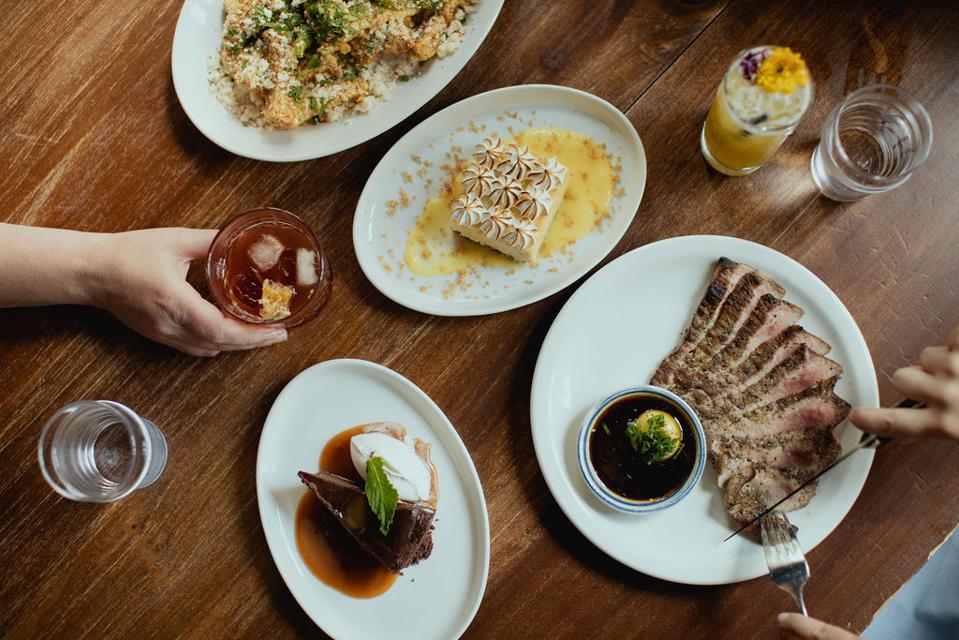As basic ingredients like flour and beef continue to skyrocket and the labor market remains competitive, profit margins for restaurants seem to get slimmer and slimmer. This has pushed many chefs to re-examine their ingredients and culinary practices, sparking innovative dishes and cooking practices. In effect, inflation is spurring chefs to be more creative, innovative and environmentally friendly as they combat surging food and labor costs.
Despite the uncertainty of inflation, a majority of restaurant operators (88%) have a neutral or positive outlook for 2023, according to a survey of 1,000 restaurants conducted by Rewards Network. Inflation concerns notwithstanding, operators have faith in customer loyalty, with 54% of restaurants expecting frequency to reach or surpass pre-pandemic levels.
These chefs offer ways that restaurants can combat spiraling inflation while at the same time not sacrificing quality.
Co-Owner and Executive Chef Rob McDaniel
Helen, Birmingham, Alabama
Executive Chef Rob McDaniel noticed that his team was often tossing spare Angel Biscuits at the end of service each night. While they tried to determine the best number of biscuits to prepare each night, McDaniel also felt challenged to identify ways to re-purpose their already cooked biscuits. So he and his team began to play with fermentation, ultimately using the biscuits to create liquid aminos. Created through fermentation with water, Angel Biscuits and Koji, these aminos are paired with a local farm egg yolk and topped with togarashi and scallion. It’s then served with Helen’s Iberico Pork Dish as a dipping sauce. The guest mixes the yolk and aminos to create a unique dipping sauce for the pork.
According to McDaniel, “Trash Into Cash” isn’t the prettiest way to describe his philosophy of what they are doing at Helen, but it pretty much sums it up. Take for instance Collard Green Stems, where 30 pounds of Collard Greens yields about five pounds of stems. Some restaurants don’t remove the stems but that isn’t how he grew up eating Collard Greens, so he want the stems removed. “However, we had to find a home for the fibrous stem as had we not we would be throwing away 20 to 30 pounds of stems each week,” he explains. “Now, we have a Chow Chow recipe that uses cabbage, so we replaced the cabbage with the Collard Green stems to create a garnish for one of our appetizers.”
Chef Shamil Velazquez
Delaney Oyster House, Charleston, South Carolina
Chef Shamil Velazquez is challenging his team at Delaney Oyster House to find new ways to utilize the fish they butcher in-house daily. With American Red Snapper, for example, they serve the fillets to guests. The cheeks or the collars are completely edible (however, it’s something that usually finds itself in the trash in most places), so he fries them like chicken wings to serve to guests, VIPs or restaurant staff. The bones of the fish will also be used as stock, so the only parts they dispose of are the gills and the fins. Shamil and his team use almost 100% of the fish, whereas at most places only 50% of the fish is used. He has also gone to the extent of using fish liver to make sausages and bologna. Or with Swordfish belly, he has made bacon out of it many times, using it in the SBLT – Swordfish Belly Bacon Lettuce & Tomato Sandwich.
“Inflation over the past couple of years has been a huge adjustment in the industry, but with us always buying from local purveyors, we understand and respect them so much that we don’t even question it,” he says. “Instead, it’s about finding ways to re-purpose or re-prepare both protein and vegetables to create minimal waste. At Delaney, a perfect example is our fish collars. We take our snappers’ collars, deep fry them and add a seasonal sauce preparation. Some of our fish mongers will even call us if they have leftovers.”
The Citizen, Alys Beach, Florida
“In an industry already plagued with high COGS, a weakened labor pool and low margins, inflation only makes our jobs harder,” says Jernigan. “I think the first thing we had to do at The Citizen was to go back and take a hard look at what proteins we were serving and why. Let’s look at Grouper for example. I took grouper, a Gulf staple, off of my menu sometime in 2022 simply because I didn’t have the heart to charge $50 plus for a 7oz piece of fish and a sauce. The options were limited unless you wanted to use a non-domestic frozen product, which I wasn’t willing to do. So we began using often overlooked, or in some cases relatively unknown species of fish.”
Wood Grilled Swordfish popped up on the menu about a year ago replacing Grouper, a much more expensive fish, in order for Jernigan to maintain fish entrée pricing in or around the upper $30’s range. They have, in turn, turned a lot of people on to a lesser known fish that had a predisposition as often being described as “dry, overcooked and tough” based on a lack of knowledge. “Most cooks don’t want to take the care to cook a somewhat temperamental protein, when in fact swordfish, if cooked correctly, is succulent, moist and will eat like a medium rare steak when properly grilled,” he says. “Now it’s our number one fish entrée because of how we prepare it. No one even questions why we don’t have grouper.”

